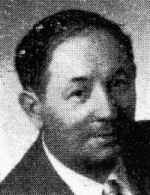 |
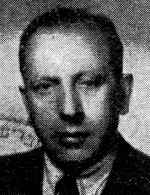 |
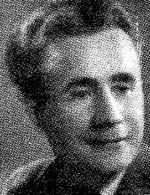 |
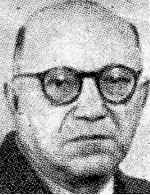 |
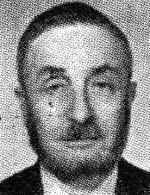 |
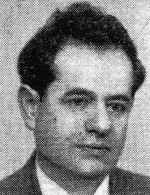 |
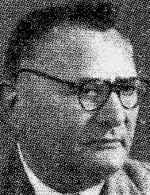 |
First row: A. Bialilev, Kh. Bar-Shalom (Fridlub), M. Gelbart, I. Grinberg
Second row: G. Zaklikovski z”l*, Sh. Poliakovitsh, P. Rafelovitsh
|
|
[Page 7]
|
|
|
|
||||||||||||||||||||||||||
|
|
|
|||||||||||||||||||||||||||
| From right to left (in alphabetical order): First row: A. Bialilev, Kh. Bar-Shalom (Fridlub), M. Gelbart, I. Grinberg Second row: G. Zaklikovski z”l*, Sh. Poliakovitsh, P. Rafelovitsh |
|||||||||||||||||||||||||||||
| * of blessed memory | |||||||||||||||||||||||||||||
|
[Page 9]
Drawn by Meyshe Zaints
Remarks on the Sokolov city Map
|
Creating ayisker-bukh means telling about Sokolov in the past and today, about her life and destruction, about hopeful days and times of great danger; creating ayisker-bukh means dedication to the struggle for her right to live and be, revealing the secret of her enduring power and the image of her essential specialness - creating the spiritual bridge between Sokolov that lived and was lost and Sokolov of the future - those who escaped, the survivors and their offspring.
Have we achieved that goal? We have grappled with great difficulties, foremost a paucity of sources. The “Pinkes Sokolov” - the basis ofthe history of the [Jewish] town - has been lost. There remain no other important documents about Jewish Sokolov. The only other source is the small number of living witnesses from among those who fled and survivors in Israel and in the Diaspora.
Besides that the scarcity of financial means has been our constant companion in the day to day work. And yet, not considering all the obstacles, this yisker-bukh that lies before us is an honorable mitsve for the Jewish community of Sokolov and an expression of a strong will to attain the stated goal.
The yisker-bukh is written with tears and blood by the escapees and survivors of Sokolov brothers and sisters, whose material arose from the depths of their experiences and their longing for their lost home.
The yisker-bukh is written mostly in Yiddish, the mother tongue of the victims, and only a small part in our national language, Hebrew. Unfortunately, because of a lack of funds, we could not enlarge the Hebrew part. We believe however that the settlements of the Sokolov Jews around the world will see to it that theyisker-bukh is translated into Hebrew so that our following generation in Israel will know and remember the source of their origin, and perhaps also into English, the language most spoken by the children of the Sokolovers in the Diaspora.
We had intended that thisyisker-bukh would include a list of the names of the more than five thousand Sokolov victims, but unfortunately we were successful in collecting the names of only some of them. We have sent out forms and it is the duty of each Sokolov Jew to write in the names of the victims not found in our list.
The publishing of the book is a result of and a victory for the collegial cooperation of all Sokol overs, individuals and landsmanshaft societies. We send our brotherly thanks to:
We thank the editor of this book, the writer M. Gelbart, for his tireless and devoted work, a who withstood and overcame many difficulties during the work.
We thank son of our city, the thinker Meyshe Mayzlish for his collaboration and editing the Hebrew part of the book.
We thank our colleague Meyshe Zaints for his map of Sokolov, drawn from memory.
And also all the authors for their work in enriching the contents of the book.
Special thanks to all the friends and helpers from the publication Sokolov Settlers in Israel for their complete and fruitful collaboration.
May the publication of this yisker-bukh after the destruction of our home Sokolov serve as a bridge for brotherly responsibility for all Sokolovers in the world.
We mourn the sudden death of a member of our board, the writer Gad Zaklikovski z”l.
Our home Sokolov was destroyed and tornout by its roots by the most persecutorial regime of all times, the Nazis and their collaborators.
Sokolov, the spring of our ascendant life, the cradle of our youthful dreams, our hometown with its more than seven thousand Jews, with the superb shul and study houses, prayer rooms and minyonim, libraries, societies, cultural and aid institutions - workaday and creative Jewish Sokolov has been cut down forever along with all the Jewish communities in Poland.
Let us tell how generations of Sokolov Jews lived, rooted in deep faith and in longing for redemption.
Let us tell about their struggle with the strange and hateful environs for physical and intellectual existence; about the Jewish workers who labored in that town, artisans and traders, who humbly carried the yoke of their hard but honest lives, overcoming all that existence's perilous temptations and decrees.
And of course we will not forget to tell about shabes un yontiv [sabbath and holidays] in the town, about Jewish scholars and those in awe of heaven, hasidim and misnaqdim [Enlighteners], community leaders and activists, fighters for Jewish rights and dreamers of redemption, revolutionaries and Zionist pioneers - all those soul-aching Jews for whom no kind oftorment or difficulty could darken their deep Jewish humanistic light.
Jews built their town Sokolov for hundreds of years. In narrow streets and lanes they set up their houses and institutions - the physical and spiritual homes of a deeply- rooted Jewish life. How did that disappear all at once? How were 20 generations of Jewish life and creativity obliterated?
[Page 13]
We, the few surviving and orphaned, the tragic witnesses to the destruction of Sokolov, should use the strength oflove and longing to construct it anew in memory of the old home and all its various hues, in order to faithfully convey its image to the next generation.
With trembling hearts we should recall and tell about Sokolov's turbulent youth, the rebels against the Exile and the life it spawned; the builders and creators of Jewish humanistic values, the dreamers of a new and better world - our dear and sincere children, sisters and brothers - and let fall a tear on their so-soon interrupted lives.
Let us pry open the streets of our dear shtetl in memory, look into each Jewish home and recognize fathers and mothers, sisters and brothers, friends and buddies, call them by their dear names and join with them in their great despair for the horrible destruction.
Let us tell and tell, for our children and grandchildren, so that the memory of the Jewish community of Sokolov will permeate all generations.
|
|
JewishGen, Inc. makes no representations regarding the accuracy of
the translation. The reader may wish to refer to the original material
for verification.
JewishGen is not responsible for inaccuracies or omissions in the original work and cannot rewrite or edit the text to correct inaccuracies and/or omissions.
Our mission is to produce a translation of the original work and we cannot verify the accuracy of statements or alter facts cited.
 Sokołów Podlaski, Poland
Sokołów Podlaski, Poland
 Yizkor Book Project
Yizkor Book Project
 JewishGen Home Page
JewishGen Home Page
Copyright © 1999-2026 by JewishGen, Inc.
Updated 24 Jul 2015 by LA